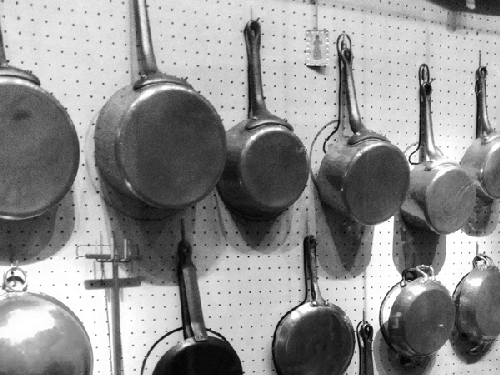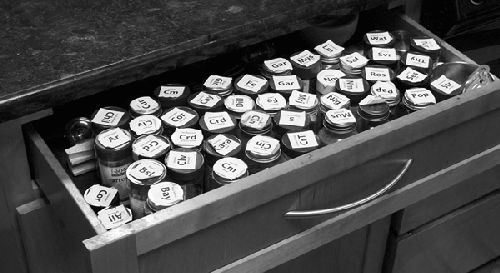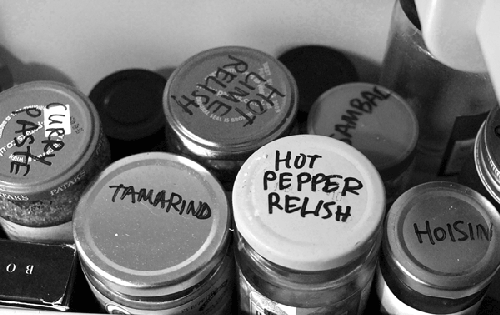A kitchen that has
been thoughtfully organized greatly helps in the process of preparing a meal. You will have
a more relaxed time cooking if you are able to quickly find what you are looking for and
have confidence that you have the right tool for the task at hand.1.Retrieval
Julia Child’s kitchen took the adage “a place for everything and everything in its
place” to its logical conclusion: pots and pans were hung on pegboards that had outlines
drawn around each item to ensure that they were always returned to the same location,
knives were stored above countertops on magnetic bars where she could easily reach out to
take one, and common cooking ingredients—oil, vermouth—were placed next to her stovetop.
Her kitchen was organized around the French method near to
hand, in which tools and common ingredients are kept out in the
open and located near the cooking station where they would normally be used.
Julia Child’s kitchen is part of the Smithsonian’s permanent collection,
including her pots and pans, which she hung on pegboards for easy
access.

Ideally, every item in your kitchen should have a “home” location, to the point where
you could hypothetically grab a particular spice jar or pan while blindfolded and without
second thought. (This isn’t hypothetical for everyone—how else would the blind cook?) This
avoids the frustration of digging through a dozen jars to find the one you’re looking for.
In practice, this isn’t always worth the work, but try to keep your kitchen organized
enough to be able to select what you’re looking for with a minimum of shuffling.
Store spices in a drawer to speed up the search for any given jar. For
extra geek cred, sort them alphabetically (e.g., allspice on the left, wasabi on the
right), so that you can use a tree-traversal search algorithm. If you don’t have a drawer available, at least make sure to
store them in a dark cupboard and not above the stove, where they would get
hot.

Instead of keeping spice containers in a cupboard, where they get stacked
N deep (invariably resulting in endless digging for a container
that turns out to be right in front), see if you have a drawer where you can see them from
the top down. If they’re too tall for you to close the drawer, check to see if there is a
way to modify the drawer to give you more clearance. In my kitchen, the cabinet had a
nonstructural 1.5″ wooden slat at the front that, once removed, allowed for storing the
bottles upright. I slapped labels on the tops of all my jars to make it easier to find
things. (Why is it that a solid third of all spices seem to start with the letter C?
Cinnamon, Cardamom, Cumin, Caraway, Cloves...)
For pull-out drawers or fridge doors with a top-down view, labeling the
top gives a quick way to find an item.

Hanging up pots, pans, and strainers not only
ensures you have a convenient “home” location for each item, but also frees up the cabinet
space that they would otherwise occupy. In my kitchen, I created a hanging system using
supplies from the hardware store: S hooks and a steel
L beam with holes every few inches (an outside corner support for
drywall, made in steel, not aluminum!).
2. Functional Grouping
Consider storing your everyday kitchen tools near the food items with which they are
most commonly used. This approach cuts down on the number of trips between cupboards and
counters. That is, instead of having a drawer for storing measuring spoons, measuring
cups, small mixing bowls, garlic presses, etc., store those items next to the foods with
which they are commonly used:
Measuring spoons and mortar and pestle with spices
Garlic press with garlic
Measuring cups with bulk foods
Small mixing bowls (8 oz) with oils, vinegars, small bulk goods
Teapots with tea; coffee beans with the French press / coffee pot